|
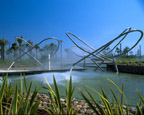 Barcelona
is the second largest city in Spain, home to nearly 1.6 million people. But the
city of Barcelona is also home to an intriguing variety of flora and fauna.
Participants visit a range of sites which reflect the ways in which plants and
animals have become integrated into the urban environment. Sites include the
recently constructed Parc de Diagonal Mar, a community garden in the Eixample
district, the spectacular Jardi Botanic and Montjuic park. Participants survey
plants and animals, and gain an understanding of how life has adapted to the
urban environment. Barcelona
is the second largest city in Spain, home to nearly 1.6 million people. But the
city of Barcelona is also home to an intriguing variety of flora and fauna.
Participants visit a range of sites which reflect the ways in which plants and
animals have become integrated into the urban environment. Sites include the
recently constructed Parc de Diagonal Mar, a community garden in the Eixample
district, the spectacular Jardi Botanic and Montjuic park. Participants survey
plants and animals, and gain an understanding of how life has adapted to the
urban environment.
|
|
|
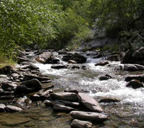 Montseny
National Park, a mountainous area located approximately 50 kilometres northeast
of Barcelona, supports several unique habitats and diverse plants and animals.
Participants assess macro-invertebrate diversity, and water quality parameters,
such as oxygen content and turbidity, at two sites along the Tordera river. By
comparing an unimpacted site and a heavily impacted site, participants gain an
understanding of how humans affect streams, rivers and lakes, and how species
adapt to changing environmental conditions. Montseny
National Park, a mountainous area located approximately 50 kilometres northeast
of Barcelona, supports several unique habitats and diverse plants and animals.
Participants assess macro-invertebrate diversity, and water quality parameters,
such as oxygen content and turbidity, at two sites along the Tordera river. By
comparing an unimpacted site and a heavily impacted site, participants gain an
understanding of how humans affect streams, rivers and lakes, and how species
adapt to changing environmental conditions.
|
|
|
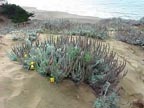 The
Llobregat Delta, an important wetlands, located approximately 5 kilometres south
of Barcelona, contains some of the only natural dunes along the Costa Brava.
Participants construct a profile of the dunes using surveying equipment. Then
participants determine how the distribution of plants changes across the dunes,
and collect abiotic data, such as humus content and infiltration rate.
Participants gain an understanding of plant succession, and an understanding of
how the distribution of plants is affected by environmental conditions. The
Llobregat Delta, an important wetlands, located approximately 5 kilometres south
of Barcelona, contains some of the only natural dunes along the Costa Brava.
Participants construct a profile of the dunes using surveying equipment. Then
participants determine how the distribution of plants changes across the dunes,
and collect abiotic data, such as humus content and infiltration rate.
Participants gain an understanding of plant succession, and an understanding of
how the distribution of plants is affected by environmental conditions.
|
|
|
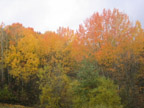 Montseny
National Park, a mountainous area located approximately 50 kilometres northeast
of Barcelona, supports several unique habitats and diverse plants and animals.
Participants visit four sights in the park. At each site, participants survey
plant and tree species, determine the growth rates of representative species,
and assess abiotic factors, such as soil pH and moisture content. By comparing
sites at different elevation and aspect, participants gain an understanding of
how species adapt to environmental conditions. Montseny
National Park, a mountainous area located approximately 50 kilometres northeast
of Barcelona, supports several unique habitats and diverse plants and animals.
Participants visit four sights in the park. At each site, participants survey
plant and tree species, determine the growth rates of representative species,
and assess abiotic factors, such as soil pH and moisture content. By comparing
sites at different elevation and aspect, participants gain an understanding of
how species adapt to environmental conditions.
|
|
|
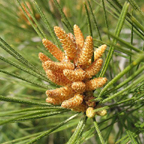 Collserola
Municipal park, a large mixed-use area, separates the city of Barcelona from the
interior. Participants establish transects and measure diameters of Aleppo Pines
(Pinus halepensis). Tree diameters are converted into biomass measurements using
an equation. Then participants extract tree cores with an increment borer, and
calculate ages and growth rates for trees. This study provides a unique
opportunity for participants to learn about dendrochronology, the study of tree
rings, as well as factors which affect tree growth in the Mediterranean region. Collserola
Municipal park, a large mixed-use area, separates the city of Barcelona from the
interior. Participants establish transects and measure diameters of Aleppo Pines
(Pinus halepensis). Tree diameters are converted into biomass measurements using
an equation. Then participants extract tree cores with an increment borer, and
calculate ages and growth rates for trees. This study provides a unique
opportunity for participants to learn about dendrochronology, the study of tree
rings, as well as factors which affect tree growth in the Mediterranean region.
|
|
|
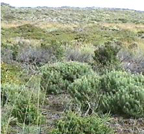 Garraf
Natural Park, approximately 10 kilometres south of Barcelona, is an extensive
natural area of rolling hills and limestone formations. Participants survey
representative plant and tree species at three sites, and collect abiotic data,
such as sun exposure and soil moisture content. Participants gain an
understanding of how plants adapt to changing environmental conditions in the
Mediterranean region, a unique habitat found in only five places around the
Earth. Garraf
Natural Park, approximately 10 kilometres south of Barcelona, is an extensive
natural area of rolling hills and limestone formations. Participants survey
representative plant and tree species at three sites, and collect abiotic data,
such as sun exposure and soil moisture content. Participants gain an
understanding of how plants adapt to changing environmental conditions in the
Mediterranean region, a unique habitat found in only five places around the
Earth.
|
|
|
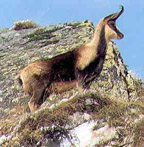 The
Val de Nuria is located in the Pyrenees, below the Puigmal, one of the highest
peaks in Catalunya. After traveling to the valley on a cremallera, or mountain
train, participants survey plant and tree species at representative sites, and
collect abiotic data, such as soil pH and moisture content. Participants also
assess water quality parameters, such as temperature and conductivity, in alpine
streams and lakes. This course represents a unique opportunity to learn about
the alpine environment in beautiful mountains close to Barcelona. Participants
may also get a chance to spot the Isard (Rubicapra pyrenaica), a
species of mountain goat common in the Pyrenees. The
Val de Nuria is located in the Pyrenees, below the Puigmal, one of the highest
peaks in Catalunya. After traveling to the valley on a cremallera, or mountain
train, participants survey plant and tree species at representative sites, and
collect abiotic data, such as soil pH and moisture content. Participants also
assess water quality parameters, such as temperature and conductivity, in alpine
streams and lakes. This course represents a unique opportunity to learn about
the alpine environment in beautiful mountains close to Barcelona. Participants
may also get a chance to spot the Isard (Rubicapra pyrenaica), a
species of mountain goat common in the Pyrenees.
|
|
|
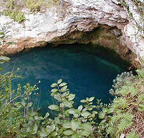 Lake
Banyoles, a picturesque freshwater lake, located approximately 75 kilometres
north of Barcelona, was used for water sports during the 1992 Olympics.
Surrounding Lake Banyoles are several small pools and fountains, formed by water
flowing through underground karstic channels. Each pool supports a unique
community of microorganisms, including species which perform photosynthesis, and
species which metabolize sulfur and iron. Participants measure several
qualitative and quantitative factors, including water color and smell, oxygen
content, sulphur content and iron content. This course represents a unique
opportunity for students to observe the macroscopic effects of microorganisms. Lake
Banyoles, a picturesque freshwater lake, located approximately 75 kilometres
north of Barcelona, was used for water sports during the 1992 Olympics.
Surrounding Lake Banyoles are several small pools and fountains, formed by water
flowing through underground karstic channels. Each pool supports a unique
community of microorganisms, including species which perform photosynthesis, and
species which metabolize sulfur and iron. Participants measure several
qualitative and quantitative factors, including water color and smell, oxygen
content, sulphur content and iron content. This course represents a unique
opportunity for students to observe the macroscopic effects of microorganisms.
|
|
|
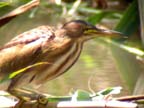 The
Llobregat Delta, an important wetlands, located approximately 5 kilometres south
of Barcelona, is an important stopping point for many birds migrating between
Europe and Africa, and boasts several distinctive species, including the
Martinet menut (Ixobrychus minutus) or Little Bittern. Participants
explore the wetlands, learn about native and non-native plant and tree species,
and view birds from special blinds and towers. This course is a wonderful
opportunity to learn about a unique natural area close to Barcelona. The
Llobregat Delta, an important wetlands, located approximately 5 kilometres south
of Barcelona, is an important stopping point for many birds migrating between
Europe and Africa, and boasts several distinctive species, including the
Martinet menut (Ixobrychus minutus) or Little Bittern. Participants
explore the wetlands, learn about native and non-native plant and tree species,
and view birds from special blinds and towers. This course is a wonderful
opportunity to learn about a unique natural area close to Barcelona.
|
|
|
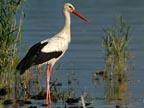 The
Aiguamolls de L'Emporda, a protected system of coastal wetlands and recovered
agricultural fields, located approximately 100 kilometres north of Barcelona, is
an important stopping point for birds migrating between Europe and Africa, as
well as a breeding and nesting ground for several species, including the Ciguena
Blanca (Ciconia ciconia) or White Stork. Participants explore the park,
learn about native and non-native plant and tree species, and view birds from
special blinds and towers. Participants also monitor habitat change from inland
fields, through wetlands, to the coast. This course is a wonderful opportunity
to visit a unique natural area along the Costa Brava. The
Aiguamolls de L'Emporda, a protected system of coastal wetlands and recovered
agricultural fields, located approximately 100 kilometres north of Barcelona, is
an important stopping point for birds migrating between Europe and Africa, as
well as a breeding and nesting ground for several species, including the Ciguena
Blanca (Ciconia ciconia) or White Stork. Participants explore the park,
learn about native and non-native plant and tree species, and view birds from
special blinds and towers. Participants also monitor habitat change from inland
fields, through wetlands, to the coast. This course is a wonderful opportunity
to visit a unique natural area along the Costa Brava.
|
|
|
 Glaciers
are one of the most important factors which shape the land. The Val de Nuria is
located in the Pyrenees, below the Puigmal, one of the highest peaks in
Catalunya. After traveling to the valley in a cremallera, or mountain train,
participants observe glacial features, such as U-shaped valleys and roches
moutonnees, and study lichens to determine the dates of the most recent glacial
periods. This course represents a unique opportunity to learn about
lichenometry, the study of lichens for dating purposes, and allows students to
view traces of the great glacial forces which shape the Earth. Glaciers
are one of the most important factors which shape the land. The Val de Nuria is
located in the Pyrenees, below the Puigmal, one of the highest peaks in
Catalunya. After traveling to the valley in a cremallera, or mountain train,
participants observe glacial features, such as U-shaped valleys and roches
moutonnees, and study lichens to determine the dates of the most recent glacial
periods. This course represents a unique opportunity to learn about
lichenometry, the study of lichens for dating purposes, and allows students to
view traces of the great glacial forces which shape the Earth.
|
|
|